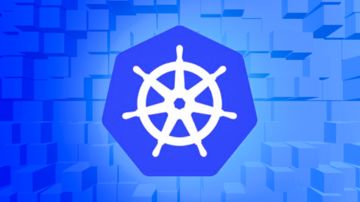
docker已经是一年前的时候学习的了,当时,不会go语言。工作中一直没有使用,已经忘光了。在放假前,sdk那边说线上docker的打包环境每次打包特别慢,查询了一下,每次打包都会下载所有需要的依赖。重复下载,需要优化到下载完成后的状态。放假期间一直在复习python的科学计算和golang。就没有花时间在docker上。 我今天的高铁回广州,提前到了,在淘宝上花了0.3元,买了一个cmcc-web账号,联网。学习学习docker简单使用。
Docker 是什么?
Docker 是一个开源的容器引擎,而一个容器其实是一个虚拟化的独立的环境,因此开发者可以将应用打包到这样的一个 docker 容器中,然后发布到任何可以运行 docker 容器的机器中,实现一次打包多处部署,解决了因为环境问题而导致的部署难题。
Docker是一个开源的引擎,可以轻松的为任何应用创建一个轻量级的、可移植的、自给自足的容器。开发者在笔记本上编译测试通过的容器可以批量地在生产环境中部署,包括VMs(虚拟机)、bare metal、OpenStack 集群和其他的基础应用平台。
Docker通常用于如下场景:
web应用的自动化打包和发布;
自动化测试和持续集成、发布;
在服务型环境中部署和调整数据库或其他的后台应用;
从头编译或者扩展现有的OpenShift或Cloud Foundry平台来搭建自己的PaaS环境。
容器是什么?
与 容器 对应的一个概念就是 镜像,镜像可以看做我们平时装系统的镜像,里面就是一个运行环境。当然我比较喜欢将镜像比作一个我们面向对象编程中的 类,而一个容器就是一个类的 实例,因此可以根据一个镜像,创建出很多个容器。每一个容器都是具体的,我们可以在容器上面做出更改,然后再把这个容器打包成一个新的镜像,从而以后可以根据改动后的镜像创建出新的容器。而容器本身可以简单理解为是一个虚拟独立的运行环境,我们要做的是中这个环境中打包我们的应用,以便于再次部署。
安装 Docker
MAC
brew isntall docker
Ubuntu
sudo apt-get install docker-ce
启动 docker 守护进程
brew services docker start
Ubuntu
systemctl start docker service docker start
docker 命令介绍
ubuntu@youdi /etc/init.d docker --help Usage: docker COMMAND
A self-sufficient runtime for containers
Options:
--config string Location of client config files (default "/home/ubuntu/.docker")
-D, --debug Enable debug mode
--help Print usage
-H, --host list Daemon socket(s) to connect to
-l, --log-level string Set the logging level ("debug"|"info"|"warn"|"error"|"fatal") (default "info")
--tls Use TLS; implied by --tlsverify
--tlscacert string Trust certs signed only by this CA (default "/home/ubuntu/.docker/ca.pem")
--tlscert string Path to TLS certificate file (default "/home/ubuntu/.docker/cert.pem")
--tlskey string Path to TLS key file (default "/home/ubuntu/.docker/key.pem")
--tlsverify Use TLS and verify the remote
-v, --version Print version information and quit
Management Commands:
config Manage Docker configs
container Manage containers
image Manage images
network Manage networks
node Manage Swarm nodes
plugin Manage plugins
secret Manage Docker secrets
service Manage services
stack Manage Docker stacks
swarm Manage Swarm
system Manage Docker
volume Manage volumes
Commands:
attach Attach local standard input, output, and error streams to a running container
build Build an image from a Dockerfile
commit Create a new image from a container's changes
cp Copy files/folders between a container and the local filesystem
create Create a new container
diff Inspect changes to files or directories on a container's filesystem
events Get real time events from the server exec Run a command in a running container export Export a container's filesystem as a tar archive
history Show the history of an image
images List images
import Import the contents from a tarball to create a filesystem image
info Display system-wide information
inspect Return low-level information on Docker objects
kill Kill one or more running containers
load Load an image from a tar archive or STDIN
login Log in to a Docker registry
logout Log out from a Docker registry
logs Fetch the logs of a container
pause Pause all processes within one or more containers
port List port mappings or a specific mapping for the container
ps List containers
pull Pull an image or a repository from a registry
push Push an image or a repository to a registry
rename Rename a container
restart Restart one or more containers
rm Remove one or more containers
rmi Remove one or more images
run Run a command in a new container
save Save one or more images to a tar archive (streamed to STDOUT by default)
search Search the Docker Hub for images
start Start one or more stopped containers
stats Display a live stream of container(s) resource usage statistics
stop Stop one or more running containers
tag Create a tag TARGET_IMAGE that refers to SOURCE_IMAGE
top Display the running processes of a container
unpause Unpause all processes within one or more containers
update Update configuration of one or more containers
version Show the Docker version information
wait Block until one or more containers stop, then print their exit codes
Run 'docker COMMAND --help' for more information on a command.
# docker --help
管理命令:
container 管理容器
image 管理镜像
network 管理网络
命令:
attach 介入到一个正在运行的容器
build 根据 Dockerfile 构建一个镜像
commit 根据容器的更改创建一个新的镜像
cp 在本地文件系统与容器中复制 文件/文件夹
create 创建一个新容器
exec 在容器中执行一条命令
images 列出镜像
kill 杀死一个或多个正在运行的容器
logs 取得容器的日志
pause 暂停一个或多个容器的所有进程
ps 列出所有容器
pull 拉取一个镜像或仓库到 registry
push 推送一个镜像或仓库到 registry
rename 重命名一个容器
restart 重新启动一个或多个容器
rm 删除一个或多个容器
rmi 删除一个或多个镜像
run 在一个新的容器中执行一条命令
search 在 Docker Hub 中搜索镜像
start 启动一个或多个已经停止运行的容器
stats 显示一个容器的实时资源占用
stop 停止一个或多个正在运行的容器
tag 为镜像创建一个新的标签
top 显示一个容器内的所有进程
unpause 恢复一个或多个容器内所有被暂停的进程在子命令中还有更多丰富的选项,可以使用 docker COMMAND --help 查看。例如:
docker run --help
docker 使用实战
接下来,我将利用 docker 部署一个 Nginx 服务器,作为讲解的例子。 要创建一个容器,那么我们必须先要有一个用于创建容器的镜像。 在 docker hub 中查找 nginx 相关镜像。
# docker search nginx ubuntu@youdi /etc/init.d docker search nginx NAME DESCRIPTION STARS OFFICIAL AUTOMATED nginx Official build of Nginx. 6979 [OK] jwilder/nginx-proxy Automated Nginx reverse proxy for docker c... 1136 [OK] richarvey/nginx-php-fpm Container running Nginx + PHP-FPM capable ... 453 [OK] jrcs/letsencrypt-nginx-proxy-companion LetsEncrypt container to use with nginx as... 229 [OK] kong Open-source Microservice & API Management ... 116 [OK] webdevops/php-nginx Nginx with PHP-FPM 90 [OK] ... ...
拉取官方镜像,其中上面的非官方镜像是用户们根据自己的需要制作的镜像,方便大家的使用。
# docker pull nginx ubuntu@youdi /etc/init.d docker pull nginx Using default tag: latest latest: Pulling from library/nginx afeb2bfd31c0: Pull complete 7ff5d10493db: Pull complete d2562f1ae1d0: Pull complete Digest: sha256:af32e714a9cc3157157374e68c818b05ebe9e0737aac06b55a09da374209a8f9 Status: Downloaded newer image for nginx:latest
在这里顺便说一下,docker 镜像是分层存储的,所以上面的 nginx 镜像有 3 层,另外每根据新的容器制作一个新的镜像以后会给这个镜像加上一层。
接下来直接利用这个镜像启动一个新的容器:
ubuntu@youdi /etc/init.d docker run --name youdi-nginx -d -p 8080:80 nginx 491435cc907a64392d4bed79fa454ea5ce0ae48ee6719f1a0da86f5c679dd6aa
此时中浏览器中输入:http://localhost:8080/ 即可访问 nginx。 参数解释:
ubuntu@youdi /etc/init.d curl http://localhost:8080
<!DOCTYPE html>
<html>
<head>
<title>Welcome to nginx!</title>
<style>
body {
width: 35em;
margin: 0 auto;
font-family: Tahoma, Verdana, Arial, sans-serif;
}
</style>
</head>
<body>
<h1>Welcome to nginx!</h1>
<p>If you see this page, the nginx web server is successfully installed and
working. Further configuration is required.</p>
<p>For online documentation and support please refer to
<a href="http://nginx.org/">nginx.org</a>.<br/>
Commercial support is available at
<a href="http://nginx.com/">nginx.com</a>.</p>
<p><em>Thank you for using nginx.</em></p>
</body>
</html>--name 为容器取一个名字-p 参数语法为 -p host port:container port; -p 8080:80 将主机上的8080端口绑定到容器上的80端口,因此在主机中访问8080端口时其实就是访问 nginx 容器的80端口-d 后台运行容器
然后我们来看一个更复杂的例子:
# docker run --name youdi-nginx \ -v /host/path/nginx.conf:/etc/nginx/nginx.conf:ro \ -v /some/html:/usr/share/nginx/html:ro \ -p 8080:80 \ -d nginx
这个例子多了一个参数-v,这个参数的作用是把本地的文件或者文件夹挂载到容器中,其中最后面的 ro 或者 rw 控制这个挂载是否可写。
-v 参数语法为-v host dir:container dir[:ro|rw]
上面的命令将本地文件中的 nginx.conf 配置文件挂载到容器,并且将要展示的静态页面也挂载到容器。 注意:在容器执行一条命令以后,当这个命令结束运行,容器也会结束运行。

接下来让我们看看 docker 别的命令。
查看所有运行中的容器:
# docker ps</html> ubuntu@youdi /etc/init.d docker ps CONTAINER ID IMAGE COMMAND CREATED STATUS PORTS NAMES 491435cc907a nginx "nginx -g 'daemon ..." 4 minutes ago Up 4 minutes 0.0.0.0:8080->80/tcp youdi-nginx
# docker ps -a ### 列出包括未运行的容器查看容器运行日志: ```bash# docker logs youdi-nginx ubuntu@youdi /etc/init.d docker logs youdi-nginx 172.17.0.1 - - [08/Oct/2017:10:42:26 +0000] "GET / HTTP/1.1" 200 612 "-" "curl/7.47.0" "-"
重启容器:
# docker restart youdi-nginxyoudi-nginx
停止运行一个容器:
# docker stop youdi-nginxyoudi-nginx# docker psCONTAINER ID IMAGE COMMAND CREATED STATUS PORTS NAMES
启动一个已经存在的容器:
# docker start youdi-nginxyoudi-nginx# docker psCONTAINER ID IMAGE COMMAND CREATED STATUS PORTS NAMES 491435cc907a nginx "nginx -g 'daemon ..." 7 minutes ago Up 15 seconds 0.0.0.0:8080->80/tcp youdi-nginx
直接杀死一个运行中的容器:
# docker kill youdi-nginx
重命名容器:
# docker rename youdi-nginx liangchangyou-nginx
删除容器:
# docker rm liangchangyou-nginx
查看本机所有镜像:
# docker imagsREPOSITORY TAG IMAGE ID CREATED SIZE nginx latest da5939581ac8 3 weeks ago 108MB
使用已经存在的容器创建一个镜像:
# docker commit -m "nothing changed" youdi-nginx youdi-nginx-imageha256:78cf8a11778f4b8bdb5dd9fbb92d621854efdf37fcb9ea246c888c7d77fc463e# docker imagesREPOSITORY TAG IMAGE ID CREATED SIZE youdi-nginx-image latest 78cf8a11778f 27 seconds ago 108MB nginx latest da5939581ac8 3 weeks ago 108MB
使用我们自己创建的镜像创建容器:
# docker run --name test -d -p 8081:80 youdi-nginx-imagedc399ca6c79d952d23f4145eaec3b43e98c0aaeb0e289a5989bf0b1b596e3e15# docker psCONTAINER ID IMAGE COMMAND CREATED STATUS PORTS NAMES dc399ca6c79d youdi-nginx-image "nginx -g 'daemon ..." 3 minutes ago Up 3 minutes 0.0.0.0:8081->80/tcp test50588da5b273 nginx "nginx -g 'daemon ..." 2 hours ago Up 2 hours 0.0.0.0:8080->80/tcp youdi-nginx

如果我们使用的容器的启动命令是一个 shell ,那么我们可以使用 attach 命令来介入这个容器,就跟我们使用 ssh 连接一台服务器差不多。
# docker attach some-container
在创建一个容器时直接启动一个可交互式的 shell, 并且退出后自动删除容器:
# docker run -it --rm centos
本文介绍了 docker 的简单用法,同时也给出了一个实际的例子用来展示 docker 命令的各种操作。作为一个快速入门的文章,本文写的相对有点简单,很多概念上的东西还需要求查看别的资料理解,但是看完本文应该就具备使用 docker 的基本能力了。此外,后续的文章应该会写一点 Dockerfile 与 docker-compose 相关的内容。

image.png
作者:若与
链接:https://www.jianshu.com/p/fe3bed774b84

 随时随地看视频
随时随地看视频



